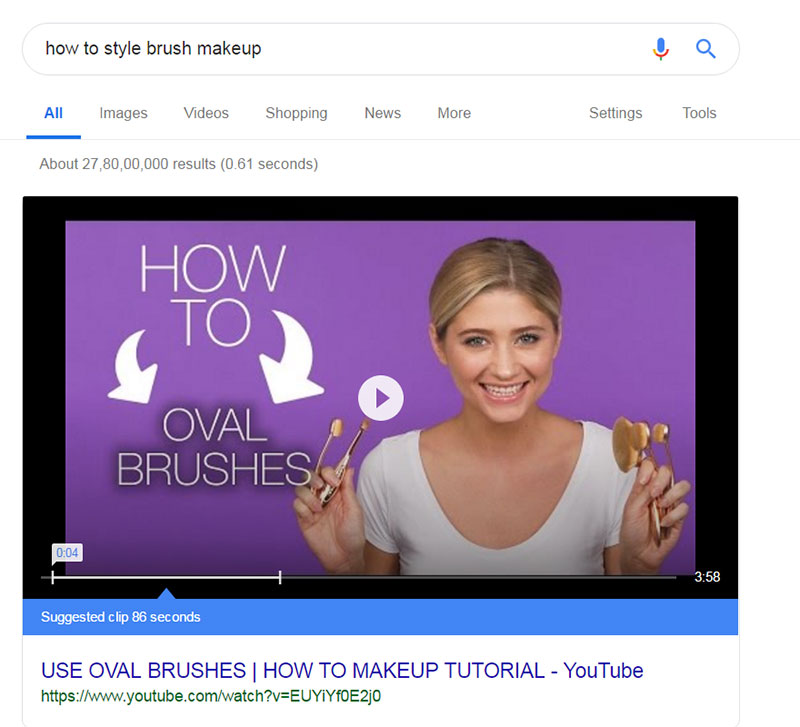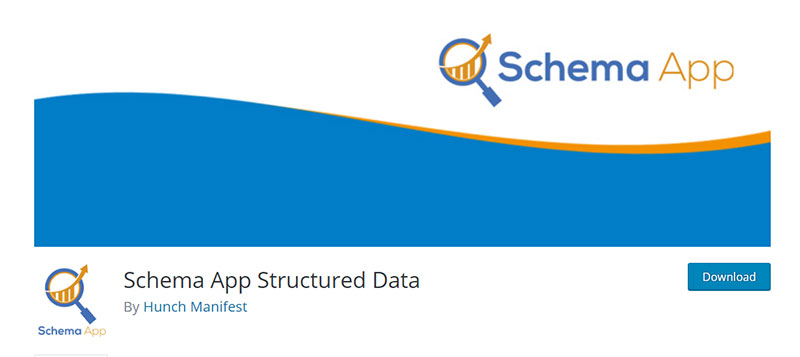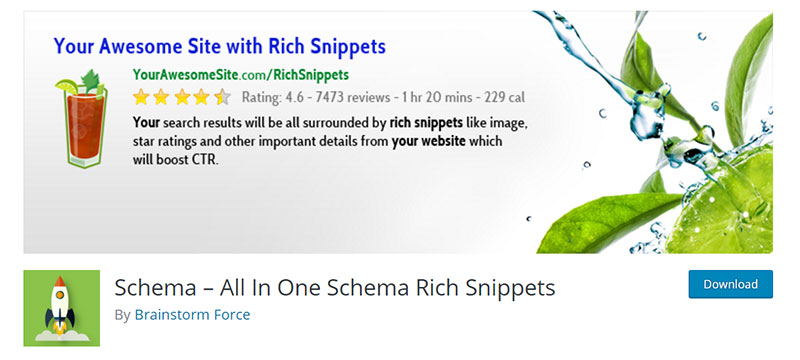You surely heard about Rich Snippets before, so you don’t need to be a programming expert to learn more about them. Rich snippets are used to make the SERP listings more dynamic. The purpose of Rich Snippets is to make users click on your pages instead of your competitors’ pages. This is the main reason why you should learn more about the use of Rich Snippets – they can totally change the game. Learn below more about Rich Snippets created by our team at wpDataTables and how they are used.
Table of Contents
- Explaining what Rich Snippets are
- Rich snippets types
- Explaining structured data basics
- Creating Microdata
- Plugins you can use
- Testing
- Don’ts
Explaining what Rich Snippets are
Rich snippets are commonly known as rich results, and they represent the results that Google generates, but with more data on the side. This additional data is generated with the help of Structured Data, which is found on any HTML page. This information helps users figure out which result is appropriate for them and which isn’t. The most common types of Rich Snippets are reviews, events and recipes.
To understand what is a Rich Snippet, you should know what Structured Data is. It is a standardized format that gives information about a page in terms of the content that it includes. For instance, if you access a recipe page, you will know what ingredients you will need, what cooking time is involved, what number of calories it includes and so on.
So, why do you need Rich Snippets? Rich snippets, or the Schema.org markup, holds great importance when discussing search engines. It affects both users and site operators. What is more special about Rich Snippets when comparing them to tags is that they are easier to notice. Here are some benefits of Rich Snippets:
- Search engines return results that are much more relevant
- Based on Rich Snippets, users can decide which results are more appropriate for their searches
- Site operators will enjoy more click-throughs and a reduced bounce rate (because users can deduce what sort of content is included on the website)
Normally, the information listed on a SERP includes the title, the URL and a meta description, as long as it is assigned to the page. By using Google Rich Snippets, the information that is displayed is expanded, offering the users an overview of what the respective page contains. Rich snippets are mostly used for review websites, persons, products, business websites and more. Google content can be tricky to skim through, and this is where Rich Snippets intervene.
Table of Contents
Rich Snippets types
There are various types of Rich Snippets:
People
This Rich Snippet refers to information that has to do with a person’s life – his biography, awards, accomplishments, details about his profession and so on. Search engines such as Google and Bing show a lot of information when the name of a person is looked up. The information is gathered from LinkedIn and other sources. This snippet is very useful for websites that need to provide people with relevant information about their staff, co-founders, team members and so on. The most common details include professional affiliations and contact details.
Products
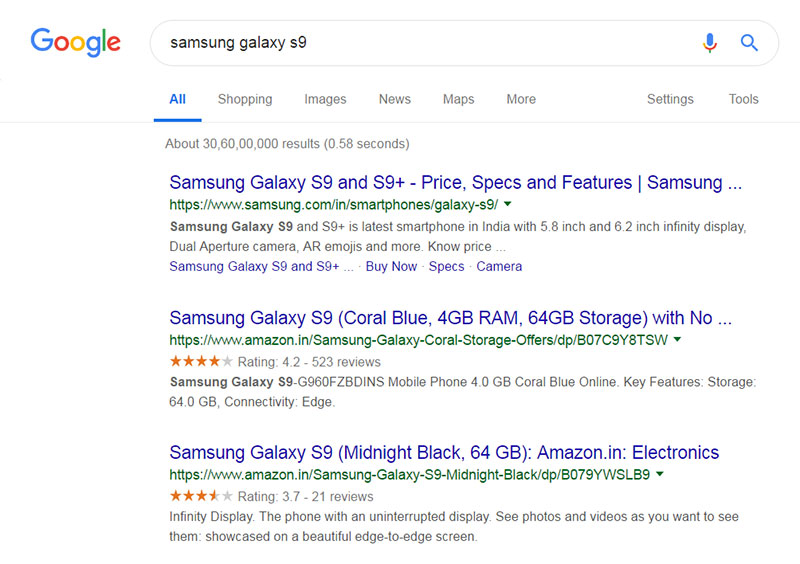
Product Rich Snippets give users information about special offers or simple products that online stores offer. The product Rich Snippet is the perfect example of using structured data markup to offer people the exact information they need about something they are interested in.
The properties include details such as the name of the product, its brand, a short description, some identifiers, some reviews, price details, quantity and so on. Online stores that use Rich Snippets are very likely to attract customers more rapidly. Adding a low price – high price comparison could be a great piece of information as well, which helps users to decide to make the purchase from one merchant or another.
Reviews
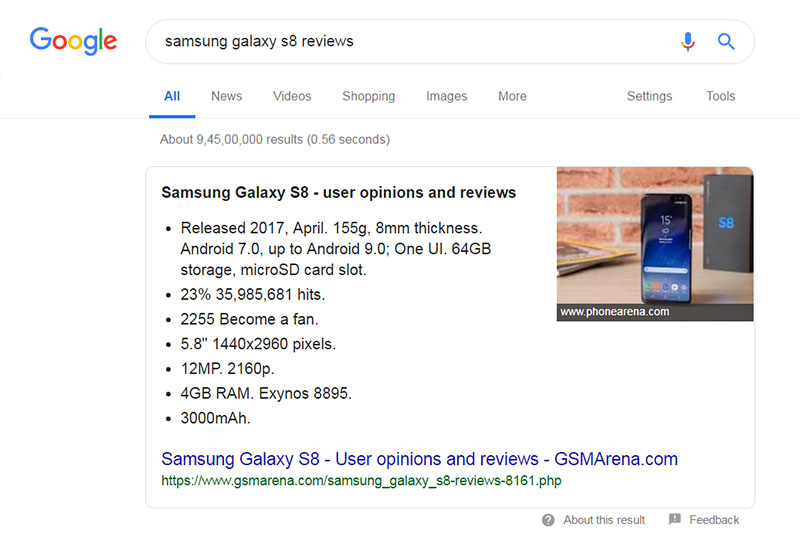
This Rich Snippet is probably the most appreciated one among online shoppers. People always search for online reviews before finally making a purchase, so such Rich Snippets can help them tremendously and make the process much shorter. The properties include are the name of the reviewed item, an image of it and the number of starts it received from other users.
Events
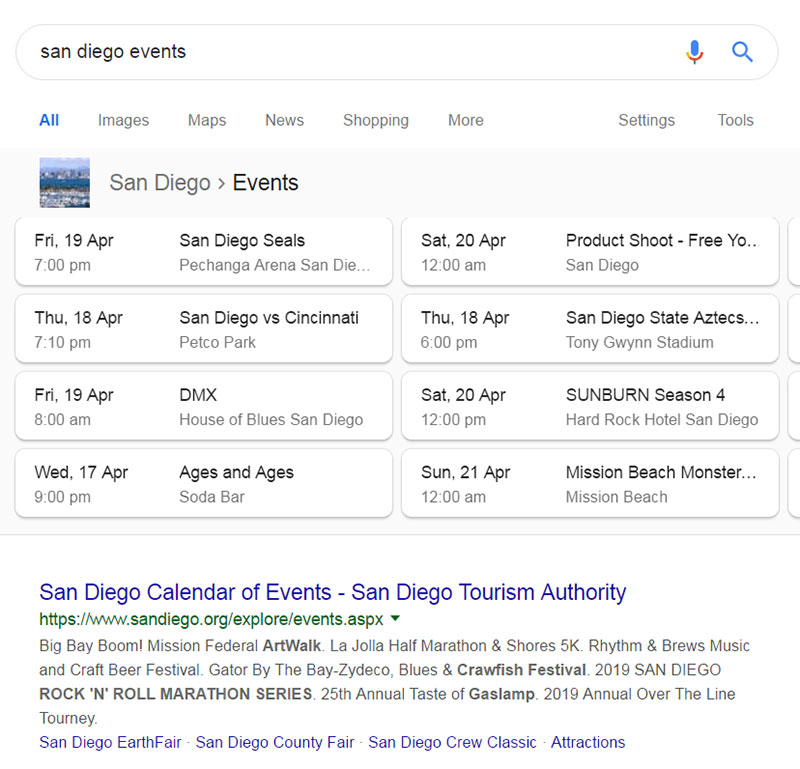
Another element that people often look for using search engines is represented by events. Rich Snippets that are related to upcoming events are extremely useful because they include extensive information about it – the name of the event, the keynote speakers/guests, the event schedule, date and time etc.
Recipes
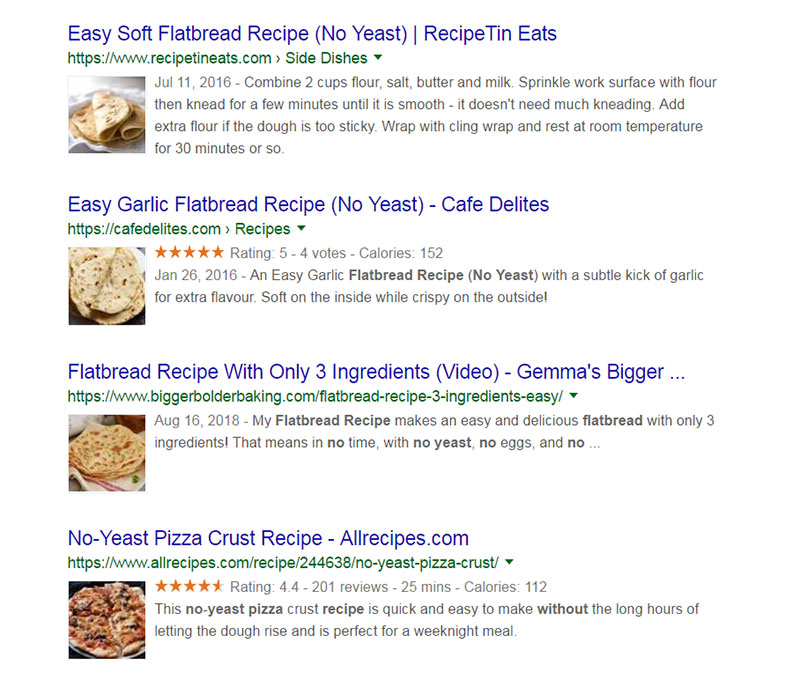
As mentioned before, a recipe Rich Snippet will give a person the needed information regarding the cooking process. It is a quick overview of the recipe, including the ingredients that are required for the recipe, the prep time, calorie count and so on. Moreover, recipes are also rated by users, so people can check out the ratings and decide whether the recipe is worth a try or not.
Local businesses
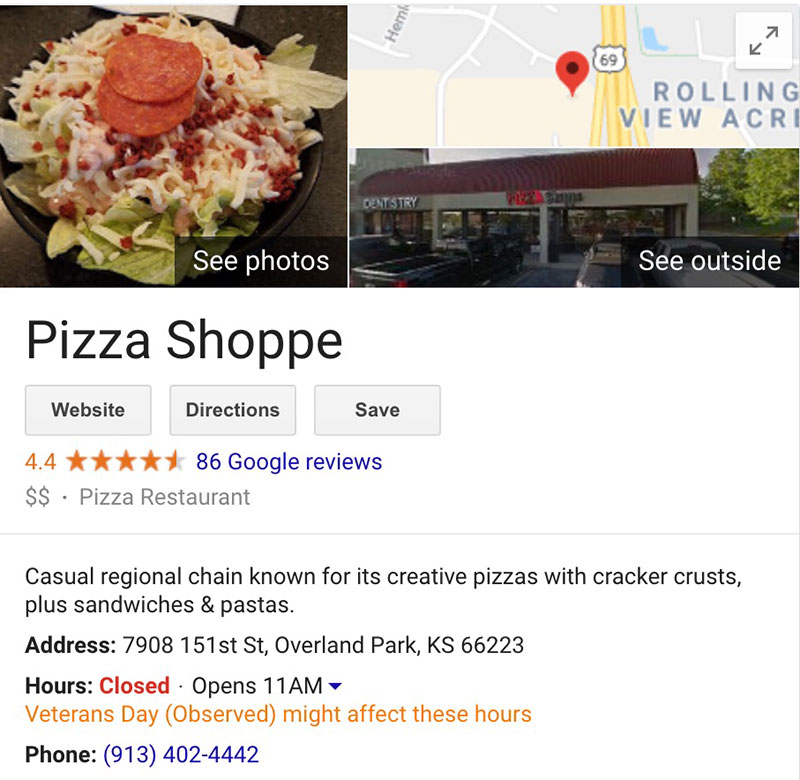
Small organizations and local businesses make use of Rich Snippets as well. People use search engines to find out more details about a company. The displayed information includes contact details and operating hours in most cases. The Rich Snippet provides people with useful extras as well – links to relevant pages on the business’ website, reviews and so on.
Music
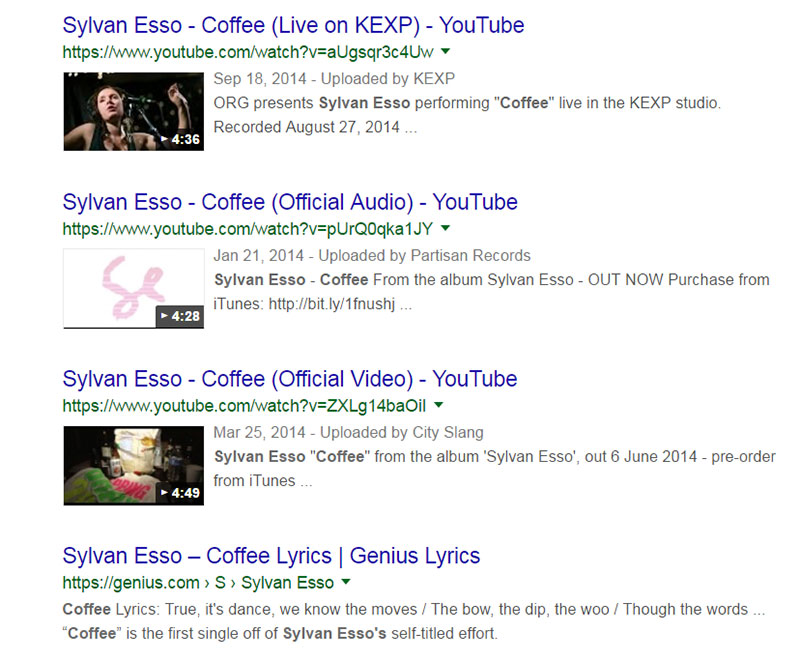
The music Rich Snippet includes information about songs – ratings, lyrics, titles, awards, details about the singers and so on.
Video
What is great about the video Rich Snippet is that users can see a preview of it, as well as relevant details related to the uploader. A written description of the video is also included here. Basically, video Rich Snippets give you the exact information you would receive by visiting YouTube.
Software
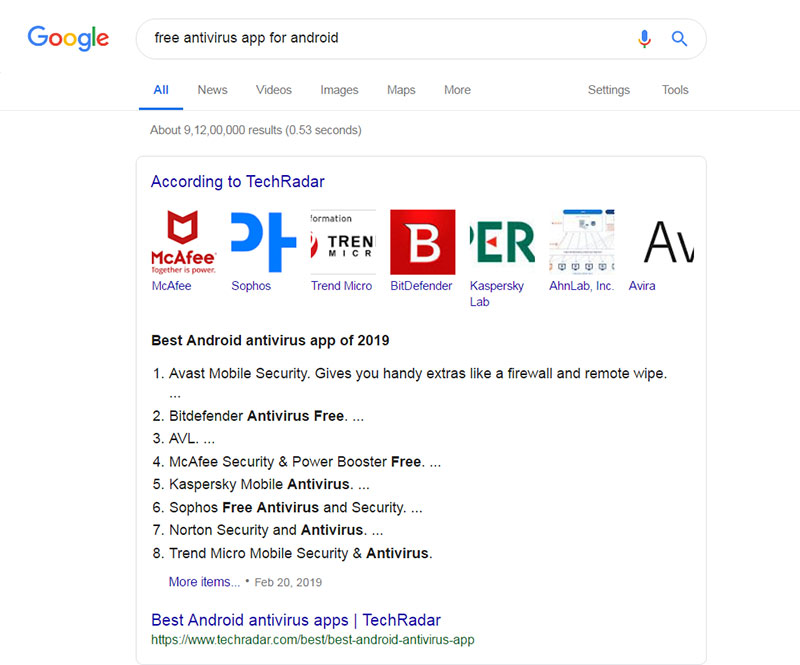
The software Rich Snippets functions the very same way as a product Rich Snippet. It presents its features in a detailed way.
All the Rich Snippets mentioned above are different in terms of application but they all have the same purpose. Rich Snippets are used to offer people the information they search for in a rapid manner, by placing these details directly on the Search Engine Results Page. It is convenient and efficient.
Explaining Structured Data basics
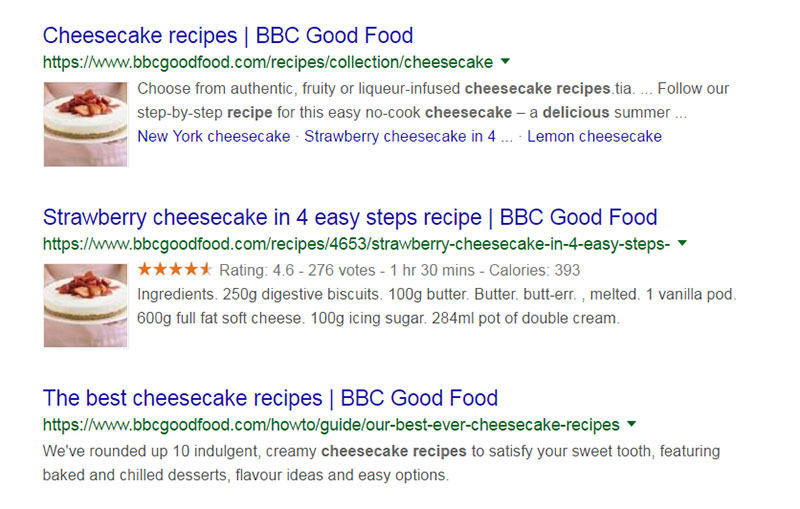
Structured Data is the very heart of search engines, as it helps them understand the published content. For instance, if a person publishes a post about a certain topic on his blog (let’s assume it’s a cheesecake recipe), the following factors should be considered:
Without Structured Data: Google or other search engines won’t be able to read the following information from the post:
- The prep time
- Images with the finished recipe
- The ingredients needed
- The steps involved
With Structured Data: adding the Recipe markup will help search engine recognize:
- The recipe takes 35 minutes
- The list of ingredients includes cream cheese, crackers etc.
- The picture of the finished cheesecake
If the search engine recognizes the information, it will display it as a Rich Snippet when someone searches for a cheesecake recipe.
In order to make your posts easy to read for the search engine, you need to define your webpage by using Google’s Structured Data Markup Tool. Of course, the process is a bit more complicated than simply mentioning “This is the ingredient list”. Search engines are not that smart yet. To communicate the information properly and help the search engine recognize your post as a recipe, you need to use a Google markup tool. The helper can be used here.
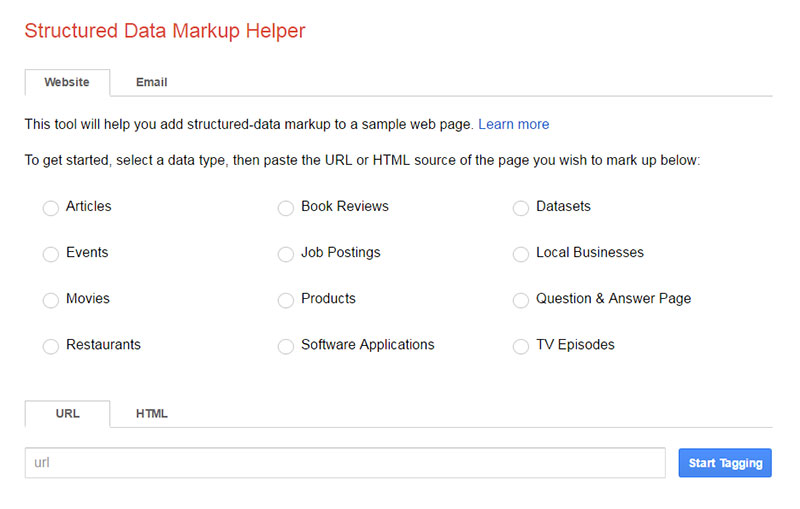
You need to select the attribute that describes your post the best. When it’s obvious, you won’t encounter any difficulties here. After selecting the attribute, you need to enter the URL of the webpage where the content is published. Note: the content must be already published when you select attributes. This is the process for helping search engines to structure data.
Creating Microdata
Once the attribute was selected, Google will send you to a page where you can associate details that are appropriate for your page with relevant microdata. Microdata is used to label content according to what it represents. Basically, using microdata tells Google or other search engines that the post you have published is an event/recipe/other. To create microdata, you simply need to play around with the Google tool and select the tags that are relevant for your post.
You can create new HTML directly from this microdata generated by Google. Creating HTML strings can be done by simply clicking the button located in the top-right corner of the tool. Keep in mind these elements:
- Itemscope – specifies whether the information is about a particular item
- Itemtype – specifies what kind of particular item the information is about
- Itemprop – specifies the properties of this particular item (name, URL etc)
Tagging the content can be done by inserting the generated HTML code in the CMS that you use. Google will tell you to paste this code in the head section of your page’s HTML.
Plugins you can use
Plugins can be helpful if your website is built using WordPress because they make the tagging job much easier.
WP Rich Snippets
Schema App Structured Data
All in One Schema Rich Snippets
Rich Snippets WordPress Plugin
Use these plugins to add shortcode (pieces of code that executes different actions). The shortcode you use will turn pages into data masters to help you manage data easier, directly from the platform.
Testing
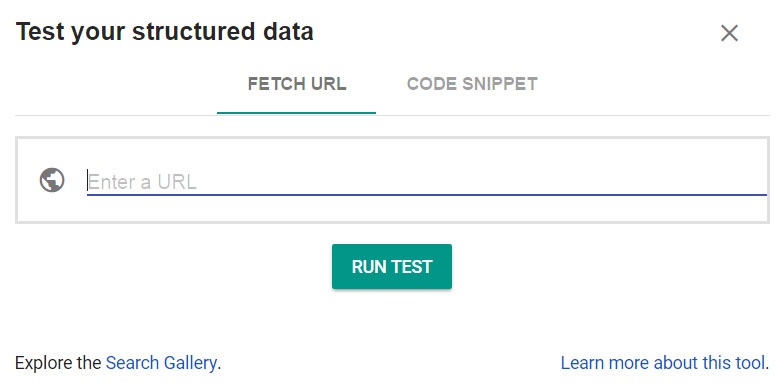
Google Webmaster Tools has other features that will be helpful in the long run (for instance, testing). To test the Rich Snippets that you use, click here to use their Structured Data Testing Tool. This tool will let you know whether the search engine is able to read the markup data that you previously set. This way, you will be able to tell whether the Rich Snippets work or not. Keep in mind that Google won’t immediately recognize the information. The process usually takes a couple of weeks until the information is crawled and indexed.
Don’ts
Read the Google guidelines before making any changes. Some of the don’ts are:
- Don’t expect a visible impact from your schema markup. It is not meant to influence search engine results
- Don’t implement schema markup on information that only search engines can see (not visible to users)
- Don’t fabricate data
- Don’t fabricate ratings
- Don’t let your schema markup go outdated (update event dates, product listings etc.)
- Don’t markup content that is irrelevant
- Don’t add unnecessary keywords to Rich Snippets properties
FAQ on WordPress Rich Snippets
What’s the Big Deal with WordPress Rich Snippets Anyway?
Oh, man, Rich Snippets? They’re a total game-changer for any WordPress site. Basically, they’re like little info cards that show up in Google search results.
Think about it: You search for a chocolate chip cookie recipe, and BAM, there’s a recipe with star ratings and cook time right in the search results. That’s rich snippets doing their magic. They make your content stand out, and can seriously boost your click-through rates. So yeah, they’re kind of a big deal.
So, How Exactly Do I Add Rich Snippets to My WordPress Site?
Alright, so you’re ready to jump on the rich snippet bandwagon? Good choice! There’s a couple of ways to go about it. You could get your hands dirty with some coding, diving into the world of Schema Markup and JSON-LD.
But hey, if that sounds like a headache, there are plugins to the rescue. There’s a whole bunch of WordPress schema plugins that make this process a breeze. Some are super user-friendly, and you’ll have those rich snippets up in no time.
Is There a Plugin You’d Recommend for Rich Snippets in WordPress?
Oh, absolutely! If you’re looking for the crème de la crème, you can’t go wrong with “All In One Schema Rich Snippets.” It’s like the Swiss Army knife for this stuff.
You get a smorgasbord of snippet types to choose from, be it reviews, events, people, products, you name it. And it’s pretty straightforward, no need to be a coding wizard. But hey, explore your options, there’s a few good ones out there.
What Types of Content Can I Use Rich Snippets For?
You know what’s cool? Rich snippets aren’t a one-trick pony. You’ve got a smorgasbord of options. Got a blog post reviewing the latest gadget? Bam, there’s a snippet for that.
Running an online cookbook? Whip up a recipe snippet. Selling products? Product snippets have got you covered. From events, books, to even local business info, there’s a rich snippet for that. It’s like choosing toppings for your ice cream, but for your WordPress site.
I Heard About Google’s Structured Data Testing Tool. What’s That About?
Ah, Google’s Structured Data Testing Tool, that’s like the secret weapon in your SEO arsenal. Once you’ve added all those schema markups and rich snippets to your site, you want to make sure Google understands it, right? Enter this tool. You just plug in your URL or code, and it tells you if you’ve hit the jackpot or if there’s any hiccups in your markup. It’s like having a backstage pass to see how Google views your site.
Are Rich Snippets Really That Important for SEO?
Let me put it this way: Imagine two ice cream stands. One just says “Ice Cream for Sale” and the other has pictures, flavors listed, and prices. Which one catches your eye?
That’s what rich snippets do for your WordPress site. They don’t directly boost your rankings, but they make your site more appealing in search results. More clicks, better user experience, and over time, Google takes notice. So yeah, in the long run, they’re a big deal for SEO.
Can Rich Snippets Affect My Click-Through Rate?
Oh, absolutely. Think about it. You’re scrolling through search results, and one result has those shiny star ratings, a picture, and all the info you need right there. It’s like a neon sign saying “Click Me!” Rich snippets make your content pop and stand out from the crowd.
So yeah, they can seriously boost your click-through rate. It’s like giving your content a mini makeover for the search results page.
What If I Get the Markup Wrong? Does It Affect My Site?
Okay, real talk? If you mess up the markup, it’s not the end of the world, but it’s not great either. Google’s pretty smart, but it’s like baking – you’ve got to get the recipe right.
If the markup’s wrong or misleading, Google might just ignore it, or worse, think you’re trying to pull a fast one and that can affect your site’s credibility. So, take your time, double-check your work, and use tools like Google’s Structured Data Testing Tool to keep things in check.
Any Tips for Beginners Trying to Use Rich Snippets?
Sure thing! First off, start simple. Pick a WordPress schema plugin that’s user-friendly. “All In One Schema Rich Snippets” is a solid choice for beginners.
Next, choose the right snippet type for your content. Selling products? Go for the product schema. Sharing recipes? There’s a snippet for that. And hey, use Google’s Structured Data Testing Tool to make sure everything’s looking good. Think of it as training wheels for rich snippets.
Can Rich Snippets Help Me With Local SEO?
Oh, you bet they can! If you’ve got a local business, you definitely want to dive into the local business schema. It’s like putting up a giant billboard for your business right in the search results.
Name, address, hours of operation, you can have all that show up. And it doesn’t just look good; it makes it easier for folks to find you. So yeah, rich snippets and local SEO? They go together like peanut butter and jelly.
If you enjoyed reading this article on rich snippets, you should also check out Yoast SEO sitemap and WordPress sitemap.


